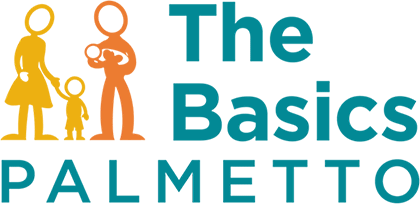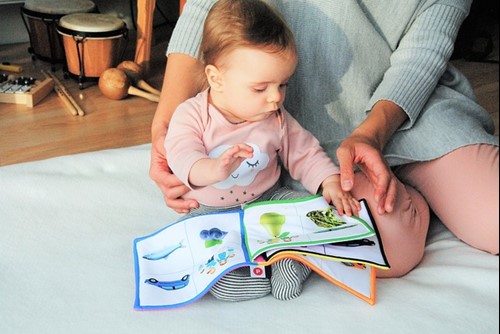Eighty percent of brain development happens within the first three years of life. During these early years of brain growth, infants and toddlers absorb massive amounts of information from interacting with other people. This early learning becomes the foundation for all future learning!
One of the most important ways to seize the opportunity of the early years is through reading to your young child just 15 minutes a day. The more we read to young children, the more prepared they become to enjoy reading and do well in school.
When you read to your infant, they learn how books work and develop new language skills. They learn to associate warm, fuzzy feelings with books and learning. It’s a wonderful way to bond with your baby and create simple routines. When you read to your toddler, you teach them to use their imaginations; they learn about people, places, and things that can be important building blocks to later life success.
This is why “Read & Discuss Stories” is one of the Palmetto Basics — 5 fun, simple, and powerful ways that every child can get a great start in life!
Simple practices create lasting foundations.
Whether you have a baby or a preschooler, here are 8 simple tips for reading and discussing stories:
1. Read to your child early and often.
You can begin reading to your child even when he or she is a baby. Research shows that children who don’t have as many words in their “word bank” are less ready for school, less prepared for academic success, and less able to follow instructions.
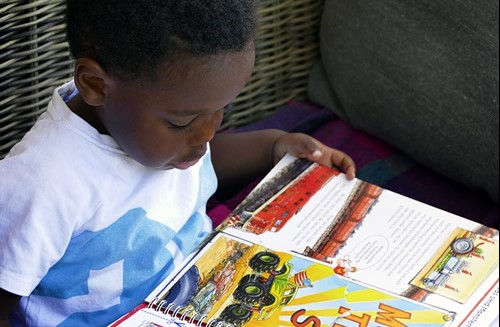
Reading to your child from their earliest days is a simple way to expose them to words, pictures, and the simple rhythms of turning pages and hearing your voice.
2. Actively involve them.
As your baby gets older and develops coordination, involve them more in the reading experience. Let them hold the book and turn the pages.
3. Make it a positive experience.
Let’s be honest, sometimes we don’t want to read to young children because it’s a struggle. They interrupt, they wiggle, they get up and walk away.
When reading to babies and toddlers, there’s just one goal: give them positive experiences with books.
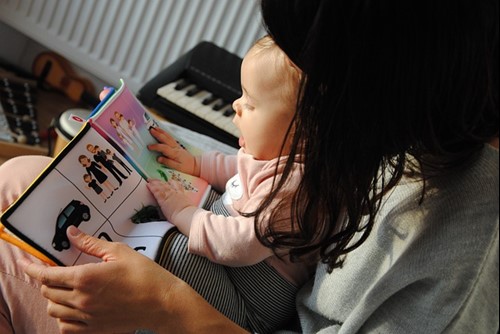
They’re learning how to look at a book and how to turn the pages. They’re hearing your voice. They’re receiving deposits in their word bank. They’re looking at pictures and pointing or watching you point. When they get tired or squirmy, close the book and move on. Keep it fun, for you and for your child!
4. Make reading together part of your routine.
Reading a book before naptime and bedtime helps children wind down and provides a regular point in the day to read together.
5. Describe the pictures.
With infants, you don’t need to read the word on the pages. Instead, describe what is happening in the pictures. Talk about the colors, shapes, and what the characters and doing. Point to the page when you do this. Books provide all sorts of learning opportunities beyond reading!
6. Have books available.
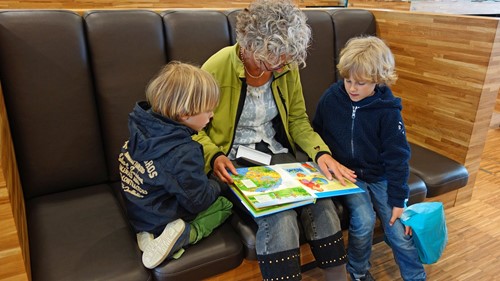
Having a book basket in the living room or keeping a book tote to keep in the car communicates that reading is an important part of your world. Keep a book in your diaper bag and tucked in the basket of your stroller. Instead of handing your child a screen, hand them a book!
7. Visit the library often.
Children LOVE the library. And libraries love children.
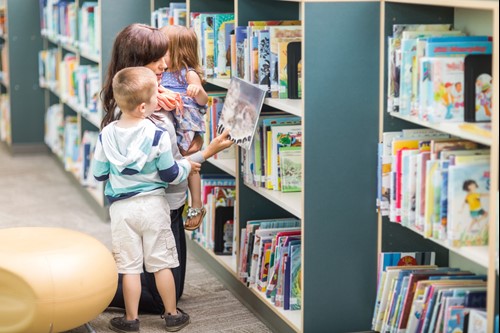
Not only can children begin to fill up their own library bags from an early age, they can also enjoy the fun and play surrounding literacy. Take advantage of the many preschool opportunities your local library has to offer!
8. Discuss stories.
Your toddler will learn the most if you have conversations while you read. Respond to their comments and questions about the story. Ask questions that get them thinking. “Why is the boy sad?” “What do you think is going to happen next?”
As your child gets older, go a step further. Retelling the story back to you {called “narration”} is a wonderful tool for language development. Let them go back through the book, using pictures to help them. As they mature, so does their ability to retell a story back to you!
We hope these tips encourage you to make books a simple but important part of your everyday routine with your child! For both parents and children, times together with books form fond and lasting memories.
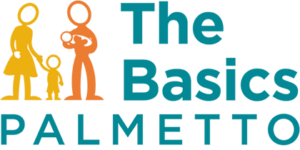
The Basics are 5 fun, simple and powerful ways that every parent can give every child a great start in life!
Here are some resources that can help you on your journey:
- Watch this short video for encouraging ways that real parents are helping their young children “Read and Discuss Stories” in everyday life. Click on the tips at the bottom of the page for Infants 0-12 months and Toddlers 12-24 months.
- Receive regular, FREE resources from The Palmetto Basics.
- Follow The Palmetto Basics on Facebook and Twitter. We provide encouraging, real-life, shareable content to help parents and caregivers!
- If you, your faith community, your organization, or your place of business would like to join us as a Champion for Children, contact us! palmettobasics@gmail.com.
Thanks for sharing this post and spreading the word about The Palmetto Basics to those within your circle of influence!
